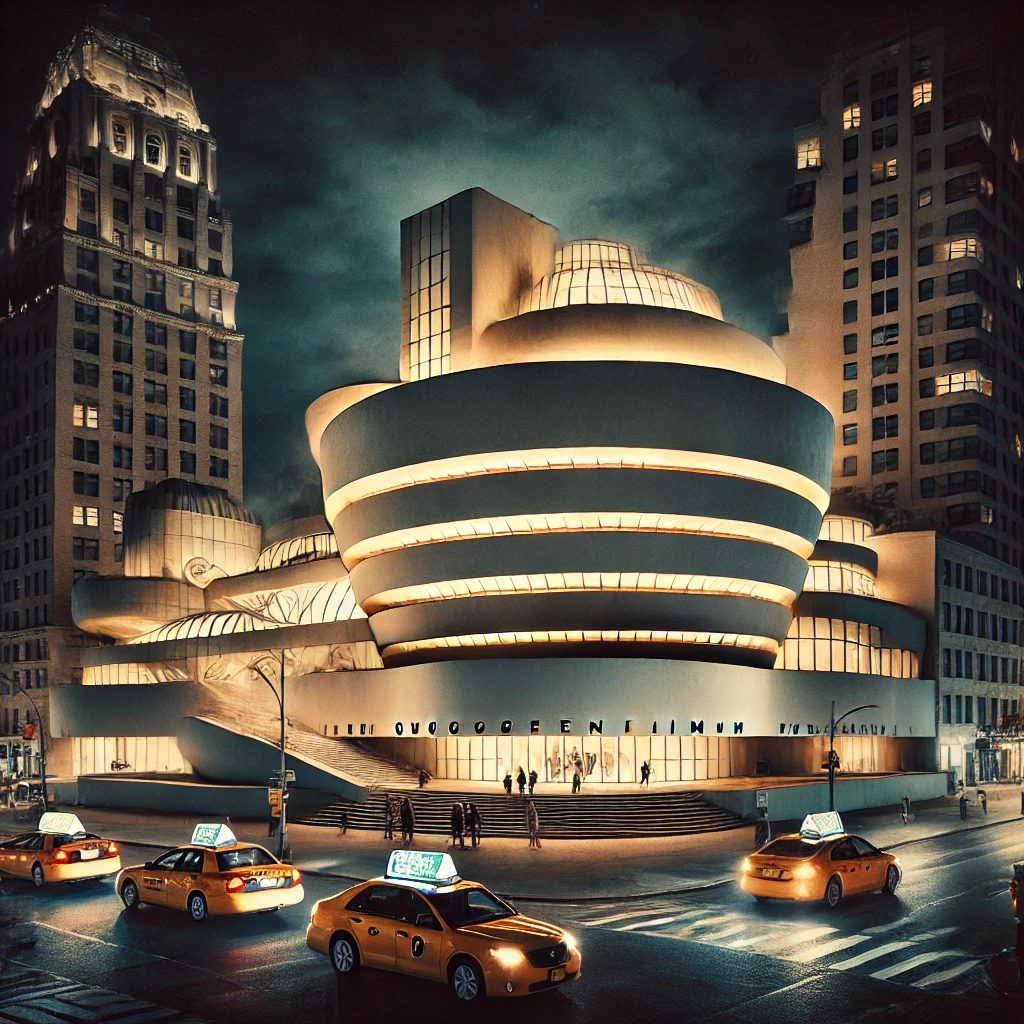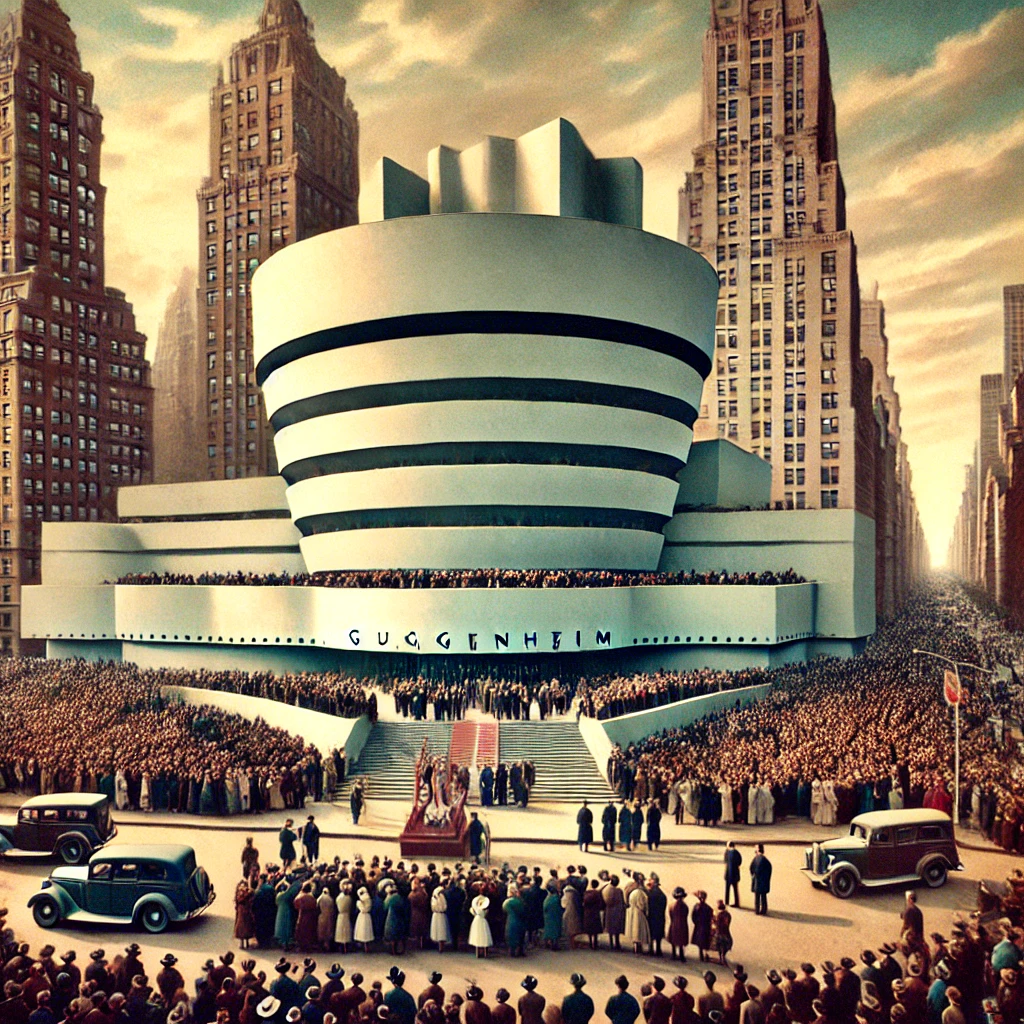On October 21, 1959, the Solomon R. Guggenheim Museum opened its doors in New York City, unveiling a striking architectural marvel designed by renowned architect Frank Lloyd Wright. This momentous event marked a significant addition to the cultural landscape of the city and redefined how art could be experienced. The Guggenheim Museum quickly became a symbol of modern art and innovation, attracting visitors from around the world.

The Vision Behind the Guggenheim Museum
The vision for the Guggenheim Museum was rooted in the desire to create a space that would not only showcase modern art but also provide a unique and immersive experience for visitors. Solomon R. Guggenheim, a successful businessman and art collector, sought to establish a museum that would reflect his passion for abstract art and his commitment to promoting the works of contemporary artists. He approached Frank Lloyd Wright in 1943 to design the museum, entrusting him with the task of creating a structure that would be as much a work of art as the pieces it would house.
Wright’s design broke away from traditional museum layouts, opting for a spiral ramp that wound around a central atrium. This innovative approach allowed for a continuous flow of movement, encouraging visitors to engage with the artwork in a dynamic way. The building’s unique shape and organic forms harmoniously integrated with the surrounding urban environment, making it an iconic landmark on New York’s Upper East Side.
The Grand Opening
The grand opening of the Guggenheim Museum was a highly anticipated event, celebrated with great fanfare. The museum initially featured a collection of modern art from Guggenheim’s personal collection, showcasing works by artists such as Vasily Kandinsky, Piet Mondrian, and Paul Klee. The opening was attended by prominent figures in the art world, including critics, artists, and collectors, all eager to explore the new venue.

The museum’s design and collection sparked immediate acclaim, with many praising the innovative layout that allowed for an uninterrupted viewing experience. The Guggenheim quickly established itself as a leading institution for modern and contemporary art, hosting numerous exhibitions and events that would further enrich the cultural fabric of New York City.
Cultural Impact and Influence
The Guggenheim Museum’s opening in 1959 marked a turning point in the way art was presented and perceived. Its unique architectural design challenged traditional notions of museum spaces, influencing future museum constructions around the world. The museum became a platform for avant-garde artists, showcasing innovative works and movements that pushed the boundaries of artistic expression.
Over the years, the Guggenheim has hosted a wide range of exhibitions, from groundbreaking retrospectives to contemporary installations. It has played a pivotal role in introducing new artists and trends to the public, fostering a deeper appreciation for modern art. The museum’s commitment to education and outreach has further solidified its reputation as a vital institution for art lovers and scholars alike.

Preservation and Expansion
Since its opening, the Guggenheim Museum has undergone various renovations and expansions to accommodate its growing collection and evolving role in the art community. The original building remains a centerpiece, but additional spaces have been added to enhance the visitor experience and provide more room for exhibitions. The Guggenheim continues to adapt to the changing landscape of contemporary art, ensuring its relevance in an ever-evolving cultural milieu.
The museum also extends its influence beyond New York, with international exhibitions and collaborations that highlight its commitment to fostering global artistic dialogue. The Guggenheim Foundation oversees a network of museums worldwide, promoting a shared appreciation for modern art and culture.
The opening of the Guggenheim Museum on October 21, 1959, represented a significant milestone in the evolution of art and architecture. Frank Lloyd Wright’s visionary design, combined with Solomon R. Guggenheim’s commitment to modern art, created a space that continues to inspire and educate visitors from around the globe. The museum stands as a testament to the power of creativity and innovation, encouraging future generations to explore the transformative potential of art. As we reflect on the legacy of the Guggenheim, we celebrate its enduring impact on the cultural landscape of New York City and the world at large.
